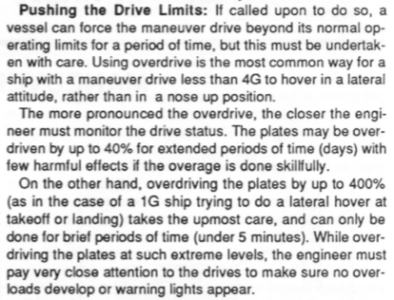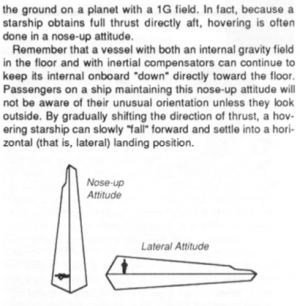AnotherDilbert
Emperor Mongoose
Engineering-wise, by CT (and T5), anti-gravity and M-drives just produces [magical] thrust. By MT, they are basically the same thing, M-drives are just a bit more advanced, with less limitations.Engineering-wise, the explanations provided in SOM and the passage in HG. Safe operations is the number 1 priority for carrying passengers and for merchants.
The issue here, as I see it, is that they are just unwilling to answer the question simply and logically. Anti-gravity is a MASSIVE boon for designers and for safe operations. If you have a personal grav belt, you are gonna have anti-grav in these ships. Also, the designs/illustrations imply that these ships have the ability to negate gravity and land/take off using it.
A ship with M-drives and an anti-grav drive handles the same as a ship with a bigger M-drive, but the bigger M-drive can always be used, not only in landing operations.
The thrust vectoring and overdrive system in MT SSOM is silly, but it's canon, whatever I think about it...
Apparently the drives can be overdriven safely for short periods of time:



